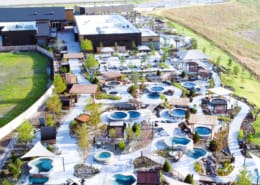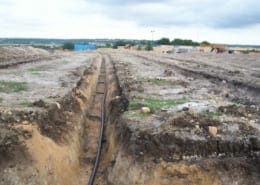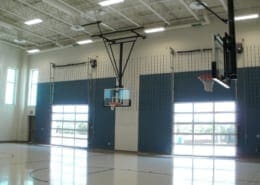World Springs at Grandscape in The Colony
Project Overview
The World Springs at Grandscape location is a luxurious retreat featuring 48 pools and spas, offering elevated customer experience through geothermal innovation and a seamless blend of spa and sauna, retail, and food and beverage services. The project emphasizes sustainable mechanical design while enhancing guest comfort and reducing the facility’s environmental footprint.
Highlights
- New Construction
- Entertainment
- Geothermal
Project Team
Project Details
Based in The Colony, this World Springs location is composed of five buildings supporting pools, spa services, retail spaces, yoga rooms, and food and beverage offerings, including a walk-up bar and a full-service bar with back-of-house operations. The facility’s mechanical systems were designed to support the dynamic needs of these diverse spaces while minimizing energy use and environmental impact.
The main administrative building and a portion of the pool operations are connected to a ground-source heat pump system with 70 geothermal bores, each 400 feet deep. Heat is transferred seasonally to optimize energy use: the heat removed from the main administrative building during the summer is used to heat spas, while in cooler months, heat is extracted from the ground to heat the administrative building and spas. The overall facility design is a hybrid system, with supplemental air-cooled chillers and condensing boilers used for additional flexibility.








